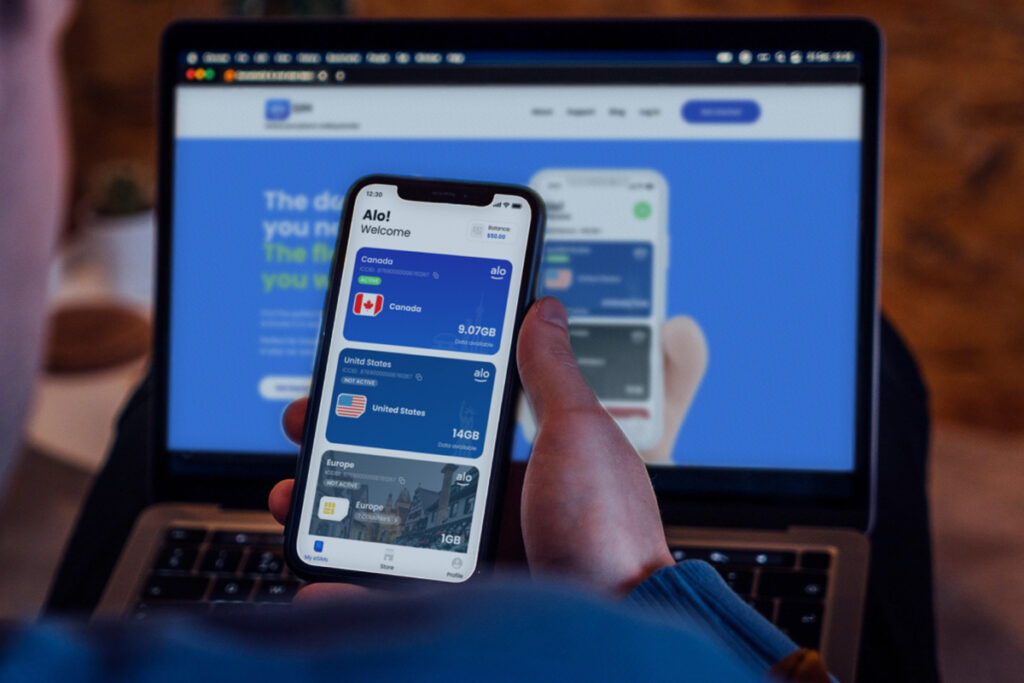I still remember the shock I felt when I received my cell phone bill after a recent trip to Europe. Even though I had barely used my phone while abroad, I was charged over $500 in roaming fees for the 3 weeks I was overseas.
The unexpected bill put a damper on an otherwise amazing vacation. If only I had known about eSIM technology back then, I could have avoided those ridiculous roaming charges altogether.
With this technology, you can quickly activate local data plans in foreign countries and bypass the astronomical roaming rates charged by your domestic cell provider.
It allows you to access affordable data just like a local would, enhancing your travel experience without the worry of bill shock when you get home.
In this article, I’ll explain what this technology is, how it eliminates roaming fees, and why it’s an essential tool for international travelers.
If you are a first-time international traveler, check out this guide and discover some useful tips for international travelers to enhance your upcoming journey.
What Is an eSIM?

An eSIM, or embedded SIM, is a programmable SIM chip that is built into a device.
Unlike a plastic physical nano-SIM card that you can insert and remove, an eSIM cannot be taken out as it is soldered to the motherboard.
It allows you to instantly switch between different cellular plans and providers with a simple software update. No more fumbling with tiny SIM cards!
The major benefit over a physical SIM card is convenience. Because it is embedded, you never have to bother swapping out SIM cards if you want to change carriers.
It also enables multiple cellular plans to be active on your device at the same time. You can have both your domestic plan and an international plan running simultaneously.
This makes traveling super seamless, as you can hop between plans with a few taps as you cross borders.
It is also more secure, as the chip is integrated into the device and can’t be removed or stolen.
The sturdy embedded construction means there are no flimsy plastic cards to bend or lose. This means it is less prone to physical damage as well compared to removable SIM cards.
Many newer model iPhones support this technology starting with the iPhone XS, iPhone XR, and iPhone 11. Google Pixel phones beginning with Pixel 2 are eSIM enabled too.
Certain Android devices also have this technology, like recent phones from Samsung’s Galaxy S and Fold series. Beyond phones, it can also be found in cellular-equipped tablets and smartwatches from Apple, Samsung and other brands.
How eSIM Eliminates Roaming Fees

To understand how a travel eSIM saves you money on international trips, you first have to understand what causes those hefty roaming charges in the first place.
When you travel overseas with your phone, you are outside of your domestic carrier’s coverage. Your phone automatically switches to connecting via a foreign carrier when roaming internationally.
Whether you make calls, send texts, or browse the internet, your domestic provider pays international rates to that foreign carrier.
They then pass those inflated roaming charges onto you through exorbitant fees, often to the tune of $10 to $20 per megabyte of data! Even just checking Google Maps or social media on vacation can result in a cell phone bill over $1000 if you aren’t careful.
With this technology, you can dodge those outrageous roaming fees by quickly switching to a local data plan in the country you are visiting.
Because you access a local carrier’s network directly through eSIM, you’ll pay the same reasonable data rates that residents of that country pay. No middleman bilking you with crazy roaming markup.
A weekly or monthly data plan from a foreign carrier often costs much less than a day or two of international roaming would.
The process of finding and activating a data plan for international travel can vary depending on your destination. In many European, Asian and South American countries, there are multiple providers to choose from.
In some regions though, eSIM options are still limited. The technology is expanding rapidly however, with more carriers coming onboard to support data plans for travelers each month.
Do your research to find the best local provider at your destination before your trip.
Using eSIM for International Travel

To take full advantage of this technology for traveling abroad, the key is being proactive. Before your trip, thoroughly research which providers offer service in the countries you’ll be visiting.
Compare rates and data packages to identify the most economical options. For a two week Eurotrip hopping between various countries for example, you may want to purchase a prepaid plan that covers the entire region.
Or if visiting Asia, get one data pack for Taiwan and another for Thailand instead of a pan-Asia plan. Find the provider and package that’s right for your specific itinerary.
I recommend activating your eSIM data plan a few days before departing on your international trip. Download the provider’s app and follow the instructions to get set up.
You’ll typically need to register with your personal details and payment information, then scan your passport for verification. The whole process usually only takes a few minutes.
If your domestic carrier supports suspending service, you can temporarily pause your home cell plan while traveling internationally. Related article calling apps vs. international call cards.





